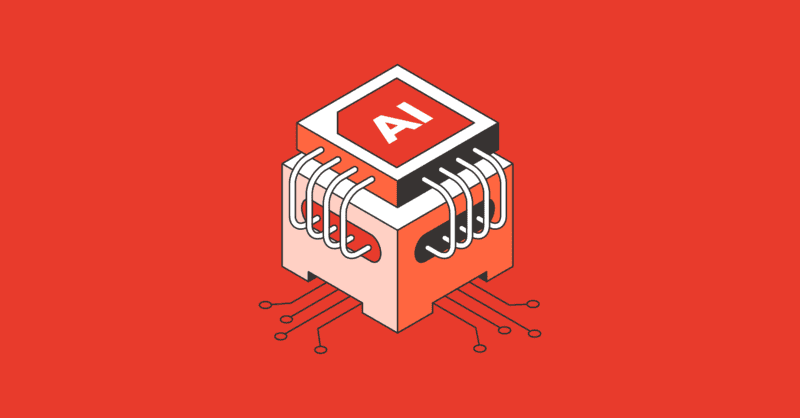Growing advances in AI offer potential for innovators to explore innovation incentives
AI has come of age. From enabling pioneering advances in medical diagnostics to the everyday use of large language models to answer questions, it’s fast becoming embedded across all areas of society. AI has vast potential to go further too: to make processes more efficient, more cost effective, and more robust. Ultimately, AI can dramatically increase the pace at which technological and scientific development is undertaken.
For innovators then, it offers huge opportunity, but its benefits go far beyond scientific and technological advances. Investment in AI has the potential to bring spillover benefits to the wider economy, with private sector investment in new locations, creation of jobs, and regeneration of local economies. The government recognises this and in January launched its AI Opportunities Action Plan. More recently, it has opened the bidding for AI growth zones, which enable local authorities to put forward plans to become dedicated regional hotbeds for AI infrastructure development.
AI funding: UK innovation incentives
While the AI growth zones represent one of the government’s newer initiatives, more established mechanisms exist to support AI and innovation. R&D tax relief – this year marking 25 years since it was first introduced in the UK – has longevity. However, other incentives such as grants, Patent Box relief, and capital allowances also play a key role in supporting the UK’s AI ecosystem.
Brought into force in 2000, R&D tax relief has provided vital support to innovative businesses of all sizes and across varied sectors for a quarter of a century. Increasingly, the relief supports AI-driven innovation – a trend reflected in our diverse client base, ranging from life sciences and pharmaceutical, to software and robotics.
Whatever the sector, the core principle remains that the project’s R&D must meet the definition set out in the DSIT Guidelines. If it does, an R&D tax relief claim can be made.
How is AI being used in R&D?
The use of AI in R&D has become ubiquitous, with headlines frequently shining a light on its use in medical discovery. Examples are numerous, but one recent discovery involved doctors using AI to analyse metadata from pictures of patients’ retinas, highlighting a previously unknown difference between male and female eyeballs.
Materials development is another field which draws heavily on AI. Materials developers are continually looking for new versions of commonly used materials such as plastics and polymers to evolve their use. AI can drive efficiencies in that process.
Beyond the headlines, the day-to-day use of AI in R&D often revolves around creating efficiencies by solving more mundane problems through automation. An example of this is call centre deflection, where AI tools and chat boxes are used on company websites to answer first instance questions and free up resources.
The possibilities are endless. If data exists with patterns in it, then AI can be applied.
Current areas of AI innovation
Use of AI in R&D is something that our technical specialists frequently see. One growing trend is the application of large language models such as ChatGPT to R&D projects – some of which will qualify for R&D tax relief.
Claiming R&D tax relief for AI: eligibility and considerations
Eligibility criteria for AI-based R&D projects are the same as for other types of R&D. A project must seek an advance in knowledge or capability in a field of science or technology, compared to the publicly available baseline. If the R&D claimed attempts to resolve a scientific or technological uncertainty, then it may constitute a qualifying activity. This includes creating a new product, process or service; or changing or modifying an existing product, process or service.
Where qualifying activity is being undertaken, certain costs may qualify for R&D tax relief, such as:
- staff
- subcontractors and freelancers
- materials and consumables
- software licenses
- certain data and cloud costs
There are, however, traps that businesses need to be alert to – particularly when adapting existing AI models for new purposes. Adapting them for a new scientific or technological purpose will likely qualify, whereas adapting them for commercial or economic reasons is unlikely to qualify. Keep in mind too that claims cannot be made if the advance sought is in the arts, humanities or social sciences.
A scenario might be where a business is seeking to develop a tool to predict new polymers. The AI model itself is derivative, but since the business is spending money on cloud computing costs to calculate possible polymers, the project is eligible. If the same technology were being used to predict the price of a commodity for an individual to make money, however, it would be ineligible, since it is using AI for economic gain.
Whatever the qualifying activity, potential claimants must be able to demonstrate how they’re using, adapting, or creating new knowledge around AI tools and techniques.
Key considerations and challenges
A key consideration for AI projects relates to cloud computing costs. When UK companies are training large models, cloud computing costs can be significant. As a result, many companies will instead purchase hardware to support the project, while others will rent it. The options should, however, be considered carefully from a tax efficiency perspective. Hardware does not constitute a qualifying cost; cloud computing does.
Another angle to consider when assessing a potential claim is where the staff working on the project are located. Tech workers don’t necessarily need to collaborate in person on-site and could be working across multiple jurisdictions or via subcontracts. New rules govern what can be claimed by subcontractors, so it’s vital to check these first, to see what qualifies and what doesn’t.
What do recent tribunal decisions mean for AI claims?
The First-tier Tribunal was prolific in handing down R&D tax judgments in 2024 and anyone researching R&D tax relief will potentially come across them. While each decision has broad application to R&D claims, none relate specifically to AI.
What is important to bear in mind, though, is the relevance of the competent professional to any R&D claim. Two 2024 decisions – Flame Tree Publishing v HMRC and Get Onbord Ltd v HMRC – focused heavily on the role of the competent professional in R&D claims. They reinforced the point that if there is no suitably qualified competent professional, there is no R&D. For AI, this will likely be the Chief Technology Officer, head of AI, or data scientist.
Explore the full range of incentives
With AI set to continue its evolution, exploring whether you qualify for R&D tax relief could bring significant benefits to your business. Keep in mind too that you might also be eligible for other innovation incentives.
Government grants should be explored. Sector-specific funds, such as the Life Sciences Innovative Manufacturing Fund, could offer opportunities for AI projects, as well as specific schemes targeting AI initiatives.
Patent Box offers opportunities for those with registered patents, while capital allowances bring relief for those investing in new plant and machinery.
Whichever incentives your business chooses to explore, R&D tax relief offers an excellent starting point. A reputable adviser, such as ForrestBrown, will be able to provide an honest appraisal of your AI project and support you with your claim.
Need support with an AI-related claim?
If you’re a company undertaking an AI-based project and believe that you could be eligible for R&D tax relief or other innovation incentive, get in touch today to find out how we can help.
- hello@forrestbrown.co.uk
- Telephone
- 0117 926 9022

